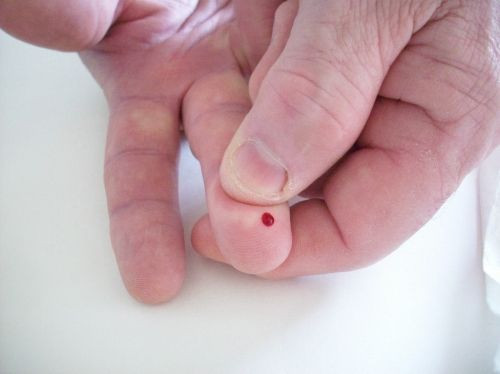Education Helps Diabetes Patients Manage Sugar Levels

Recent studies show that educational interventions improve glycemic levels in patients with poorly controlled diabetes.
Three controlled trials, as part of the Health Care Reform series, were recently done to examine the effectiveness of behavioral and educational interventions for poorly controlled diabetes in patients. All three studies showed glycemic improvement, some more effective than others.
Results were published in the journal Archives of Internal Medicine.
Katie Weinger, Ed.D. of Joslin Diabetes Center in Boston tested the efficacy of behavioral diabetes intervention on improving glycemia in long duration, poorly controlled diabetes.
Weinger and her colleagues randomly chose 222 adults with diabetes, 50 percent male, 50 percent female, and approximately half and half with diabetes Type 1 and Type 2.
Interventions were 10 hours long and 2 hours per week over the course of 5 weeks.
The patients were randomized into three treatment groups. The first was a structured behavioral treatment, which included a five-session manual-based, educator-led structural intervention with cognitive behavioral strategies. The second was a group attention control, which was an educator-led attention control group education program. The third was and individual control, which was an unlimited individual nurse and dietitian education session for six months.
“There were 30 educators, dietitians and nurses that educated patients in diabetes education. The educators were trained in behavioral techniques using cognitive behavioral strategies and it was highly structured,” said Katie Weinger, Ed.D. of Joslin Diabetes Center in Boston.
“We tried to help the patients learn how to interpret their glucose levels and to teach them what an impact diabetes had on their glucose levels, by checking their levels frequently and going over it with them, determining why they would fluctuate so the patients started to understand what was going on in their body’s and why,” said added.
Weinger hopes that these studies will be further support for the medical community to know how important diabetes education is.
All three interventions were successful in glycemic improvement in Weinger’s study, but the structured behavioral intervention was the most effective and participants with type 2 diabetes showed greater improvements than those of type 1 diabetes.
“In my study all three types of diabetes education worked to help patients improve glycemia control. However, the experimental condition, which was the highly structured behavioral intervention worked the best,” said Weinger.
Another study by Joann Sperl-Hillen, M.D. of HealthPartners Research Foundation and Health Partners Medical Group in Minneapolis, evaluated a total of 623 adults from Minnesota and New Mexico with type 2 diabetes and glycosylated hemoglobin (HbA1c) concentrations of 7 percent or higher. Patients were randomized into three different interventions, group education, individual education, and usual care, no assigned education control group.
The study found that individual education resulted in better glucose control in patients with suboptimally controlled diabetes than did group education. Average HbA1c concentrations decreased across all treatment groups. However, levels decreased significantly more in the individual education group and individuals in that group were also more likely to have HBA1c levels of 7 percent or higher.
"In conclusion, among patients with type 2 diabetes of relatively long duration and HbA1c levels of 7 percent or higher, short-term glucose control improved more in those receiving individual diabetes education than in those receiving group diabetes education or assigned to no education," the authors write.
A third study by Dominick L. Frosch, Ph.D of Palo Alto Medical Foundation Research Institute in Palo Alto, California examined the effectiveness of disease management programs among socially and economically disadvantaged patients with poorly controlled diabetes.
With 201 patients, 72 percent African American or Latino, 74 percent with annual incomes of less than or equal to $15,000 with poorly controlled diabetes, were randomized to receive either a treatment group intervention which included a package that had a 24-minute video behavior support intervention with a workbook and five sessions of telephone coaching by a trained diabetes nurse, or a control group intervention which was a 20-page brochure developed by the National Diabetes Education Program.
There was a significant overall reduction in mean HbA1c levels from study initiation to six-month follow-up but differences between the groups were not significant.
Frosch explained that the differences in other clinical measures, including blood lipid levels and blood pressure and measures of diabetes knowledge and self-care behaviors were also non-significant and that they concluded that most of the intervention that their study provided might not have been enough.
“The conclusion that we drew essentially from our study is that the intervention that we provided was probably not enough, more intensive interventions are probably necessary,” said Frosch.
“I hope that this data is useful for those people thinking about how it is that we can design a health care system that is responsive to the needs of the patients…to help them recognize that we need more intensive interventions than is being provided or considered.”
Published by Medicaldaily.com



























